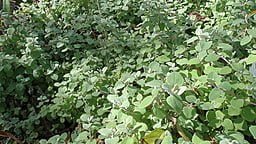
Share this post!
Well, it’s all over the news now. Flu ‘season’ will be upon us soon, so it’s time to prepare. Read on to learn nutrition therapy strategies to ward off flu viruses.
Many people choose to get an annual flu shot. Others want to try a more natural approach.
So, what is the ‘flu’ and is there, indeed, a natural approach to minimize the risks of contracting this illness?
What Causes the Flu?
Here’s what the American Lung Association says:
“The flu is caused by influenza viruses that infects the nose, throat, and lungs. These viruses spread when people with flu cough, sneeze or talk, sending droplets with the virus into the air and potentially into the mouths or noses of people who are nearby. You can also get flu by touching a surface or object that has flu virus on it and then touching your own mouth, eyes or nose.
You can spread the flu before you know you are sick, beginning 1 day before symptoms develop and up to 5 to 7 days after becoming sick. Some people, especially young children and people with weakened immune systems, might be able to infect others for an even longer time.”
What Are the Symptoms of V?
Symptoms of the flu can include:
- Sudden onset of high fever
- Headache, muscle aches and joint pain
- Cough (usually dry)
- Chills
- Sore throat
- Nasal congestion and runny nose
- Fatigue
Why does the influenza virus show up every year, at the same time?
This is what Harvard University has to say about that…..
“1) During the winter, people spend more time indoors with the windows sealed, so they are more likely to breathe the same air as someone who has the flu and thus contract the virus.
2) Days are shorter during the winter, and lack of sunlight leads to low levels of vitamin D and melatonin, both of which require sunlight for their generation. This compromises our immune systems, which in turn decreases ability to fight the virus.
3) The influenza virus may survive better in colder, drier climates, and therefore be able to infect more people.”
A paper from the 1960s provides a great explanation. The study tested the survival time of different viruses (i.e. the amount of time the virus remains viable and capable of causing disease) at contrasting temperatures and levels of humidity. The results from the study suggest that influenza actually survives longer at low humidity and low temperatures. At 43°F with very low humidity, most of the virus was able to survive more than 23 hours, whereas at high humidity and a temperature of 90°F, survival was diminished at even one hour.
This research clearly confirms that we should all live on a tropical island with warm temperatures and high humidity. 😉 However, if that’s not possible for you, let’s look at ways to make this virus unable to thrive in your microbiome.
Flu Proof?????
I don’t know if it’s possible to make our body ‘flu proof’, but I do know that nutrition therapy provides ways to limit the infective properties of the virus.
A quick lesson in immunology tells us that Hemagglutinin (HA) is a glycoprotein found on the surface of influenza viruses and is integral to its’ ability to infect us.
If we can prevent the influenza virus from ‘sticking’ to host cells, we’ve rendered it impotent.
As fate would have it, there are several plants that do just that. YAY!
A fascinating article published in Journal of Preventive Medicine and Hygiene and accepted into PubMed highlights some of the plants that can help inhibit the infective nature of the influenza virus.
Nature’s Flu Remedies
Licorice
“Effective antiviral compounds that interfere with the attachment and entry of the influenza virus into the host cell include  triterpenoids such as glycyrrhizic acid (GA), glycyrrhizin (GR), glycyrrhetinic acid and further derivatives extracted from licorice. GR is the most active of these molecules and can repress the replication of H3N2 and H5N1, as well as of several viruses. GR is able to inhibit entry of the virus into the host cell and reduces the level of pro-inflammatory molecules.”
triterpenoids such as glycyrrhizic acid (GA), glycyrrhizin (GR), glycyrrhetinic acid and further derivatives extracted from licorice. GR is the most active of these molecules and can repress the replication of H3N2 and H5N1, as well as of several viruses. GR is able to inhibit entry of the virus into the host cell and reduces the level of pro-inflammatory molecules.”
- How cool is that? Licorice can prevent attachment of flu cells AND repress replication! That’s a pretty big deal.
(It’s important to note that while licorice has great medicinal properties, it can be problematic for those with high blood pressure. Working with a professionally trained nutrition therapist will ensure that you are getting the right guidance.)
Milk Thistle
Extracts from milk thistle seeds, known as silymarin, are active against influenza. Silybin, another milk thistle extract, can block the entry of the flu virus. These milk thistle extracts also have strong anti-oxidant properties, which can enhance immune function.
Tea Tree Oil
Compounds found in Tea Tree Oil (Melaleuca) have a wide range of antimicrobial activity. These compounds can inhibit virus entry and attachment of the influenza virus to host cells.
Curcumin
Curcumin is able to inhibit virus entry and hemagglutinin (remember, that glycoprotein that allows the flu virus to infect us). It also has antioxidant, anti-inflammatory, antiviral, and antibacterial properties.
Elderberries

Compounds found in elderberry fruit, like rutin and quercetin, are also known as hemagglutinin (HA) inhibitors, thereby, minimizing the ability of the virus to infect.
Isn’t it exciting to know that Mother Nature and Nutritional Therapy offer effective strategies to ward off the flu virus?
In an ideal world, you would implement strategies all year long to support optimal immune health. However, if you’re not quite sure how to do that, a qualified Nutrition Therapist can guide you through protocols that will enhance your optimal level of health.
I can’t end this blog without a real, tangible action step to take to improve your immune health and reduce your risk of contracting the flu…..so, I am sharing with you one of my favorite elderberry syrup recipes. It is so easy to make…..even if you don’t feel like a chef. I found this recipe on the WellnessMama blog a few years ago and it’s been my go-to ever since.
Elderberry Syrup Recipe
A simple elderberry syrup recipe made with dried elderberries, honey, and herbs for an immune-boosting and delicious syrup. Can be used medicinally or on homemade pancakes or waffles.
Prep Time: 5 minutes
Cook Time: 1 hour
Author: Katie Well
Ingredients
- 3½ cups water
- 2/3 cup black elderberries (dried, or 1 1/3 cups fresh or frozen)
- 2 TBSP ginger (grated)
- 1 tsp cinnamon
- ½ tsp ground cloves
- 1 cup raw honey (or organic maple syrup for an infant-friendly recipe)
Instructions
- Pour the water into a medium saucepan and add the elderberries, ginger, cinnamon, and cloves.
- Bring to a boil and then cover and reduce to a simmer for about 45 minutes to 1 hour until the liquid has reduced by almost half.
- Remove from heat and let cool until it is cool enough to be handled.
- Mash the berries carefully using a spoon or other flat utensil.
- Pour through a strainer into a glass jar or bowl.
- Discard the elderberries and let the liquid cool to lukewarm.
- When it is no longer hot, add the honey and stir well.
- When the honey is well mixed into the elderberry mixture, pour the syrup into a mason jar or 16-ounce glass bottle of some kind.
Ta-da! You just made homemade elderberry syrup! Store in the fridge and take daily for its immune-boosting properties.
The standard dose is ½ – 1 teaspoon for kids and ½ – 1 tablespoon for adults. If the flu does strike, take the normal dose every 2-3 hours instead of once a day until symptoms disappear.
Important note:
Adjustments must be made if you are planning on giving this to an infant. Honey acts as a natural preservative as well as a sweetener (and has other healthful properties, too), but it is not recommended for children less than one-year-old. This is because of a rare condition called infantile botulism, which can be fatal. If you’re planning to share your syrup with a very little one, you will need to substitute sugar or maple syrup for the honey.
Related reading…
5 Ways to Use Elderberry This Winter
Cold, Flu, and Yes, Coronavirus
Maximizing Foods for Your Seasonal Allergies
About the author: Dr Becky Spacke, teaches holistic nutrition courses at Nutrition Therapy Institute. In addition, she has a private practice, working with people at risk of developing Alzheimer’s Disease. You can learn more by visiting HealingFromAlz.com
About Nutrition Therapy Institute’s Holistic Nutrition Certification
Nutrition Therapy Institute (NTI) is a leader in holistic nutrition education. Since 1999, NTI has provided students with the highest quality in nutrition training by offering comprehensive holistic nutrition courses online and in-person to help students achieve thriving careers as holistic nutrition therapists in the field of holistic nutrition counseling and wellness. Interested in starting our holistic nutrition courses and earning your holistic nutrition certification? Attend an informational webinar to learn more by signing up HERE.
Images: Image by Karen Arnold is free for use by Public Domain Pictures; African Garden, Helichrysum petiolare ‘Limelight’ Licorice Plant is licensed under CC BY 2.0; Image by ulleo is free for use by Pixabay
Share this post!




















